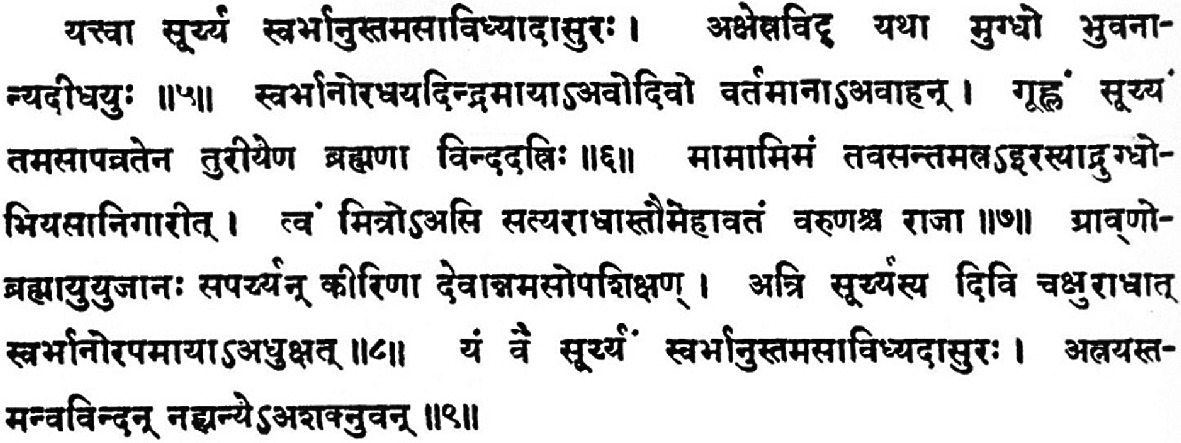

The 19th century Indologist Weber summarized the contrast as follows: The contents of the Atharvaveda contrasts with the other Vedas. Some hymns were not about magic spells and charms, but prayer qua prayer and philosophical speculations. Some magic spells were for soldiers going to war with the goal of defeating the enemy, others for anxious lovers seeking to remove rivals or to attract the lover who is less than interested, some for success at a sporting event, in economic activity, for bounty of cattle and crops, or removal of petty pest bothering a household. In these cases, the affected would be given substances such as a plant ( leaf, seed, root) and an amulet. The most frequent goal of these hymns charms and spells were the long life of a loved one or recovery from some illness. The Atharvaveda Samhita contains hymns many of which were charms, magic spells, and incantations meant to be pronounced by the person who seeks some benefit, or more often by a sorcerer who would say it on his or her behalf. The text, states Kenneth Zysk, is one of the oldest surviving records of the evolutionary practices in religious medicine and reveals the “ earliest forms of folk healing of Indo-European antiquity“. Many books of the Atharva Veda Samhita are dedicated to rituals without magic and to theosophy. The Samhita layer of the text likely represents a developing 2nd millennium BCE tradition of magico-religious rites to address superstitious anxiety, spells to remove maladies believed to be caused by demons, and herbs- and nature-derived potions as medicine. The Atharvaveda is sometimes called the “ Veda of magical formulas“, an epithet declared to be incorrect by other scholars. The two recensions differ in how they are organized, as well as the content.įor example, the Book 10 of Paippalada recension is more detailed and observed carefully not doing a single mistake, more developed and more conspicuous in describing monism, the concept of “ oneness of Brahman, all life forms and the world“. Of these, only the Shaunakiya recension, and the more recently discovered manuscripts of Paippalāda recension have survived. The Caraṇavyuha, a later era Sanskrit text, states that the Atharvaveda had nine shakhas, or schools: paippalāda, stauda, mauda, śaunakīya, jājala, jalada, brahmavada, devadarśa, and cāraṇavaidyā. The text is, state Patrick Olivelle and other scholars, a historical collection of beliefs and rituals addressing practical issues of the daily life of the Vedic society, and it is not a liturgical Yajurveda-style collection. The Atharva Veda is a collection of 20 books, with a total of 730 hymns of about 6,000 stanzas. These include the Mundaka Upanishad, the Mandukya Upanishad, and the Prashna Upanishad. The latter layer of Atharvaveda text includes three primary Upanishads, influential to various schools of Hindu philosophy. Along with the Samhita layer of text, the Atharva Veda includes a Brahmana text and a final layer of the text that covers philosophical speculations. The Atharvaveda was likely compiled as a Veda contemporaneously with Samaveda and Yajurveda, or about 1200 BC – 1000 BC. Royal rituals and the duties of the court priests are also included in the Atharva Veda. In contrast to the ‘ hieratic religion‘ of the other three Vedas, the Atharva Veda is said to represent a ‘ popular religion‘, incorporating not only formulas for magic but also the daily rituals for initiation into learning ( upanayana), marriage and funerals. Reliable manuscripts of the Paippalada edition were believed to have been lost, but a well-preserved version was discovered among a collection of palm-leaf manuscripts in Odisha in 1957. Two different recensions of the text – the Paippalāda and the Śaunakīya – have survived into modern times.


 0 kommentar(er)
0 kommentar(er)
